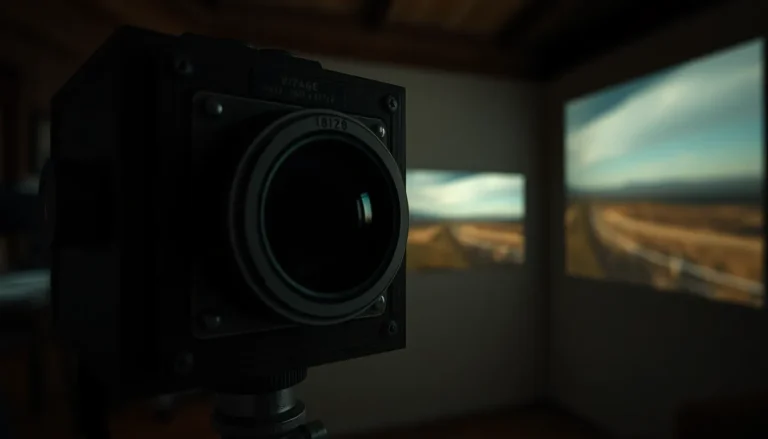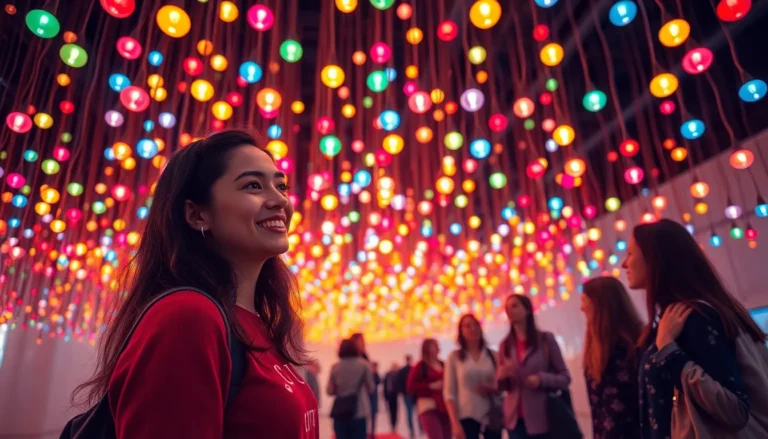Table of Contents
ToggleJellyfish photography might just be the most mesmerizing underwater adventure you never knew you needed. These ethereal creatures glide through the ocean like floating aliens, their translucent bodies illuminating the depths with a magical glow. Capturing their beauty isn’t just a hobby; it’s a captivating art form that turns the ordinary into the extraordinary.
Overview of Jellyfish Photography
Jellyfish photography captures the elegance of these fascinating marine creatures. Photographers explore underwater environments, seeking opportunities to shoot these transparent beings. Artists often emphasize factors like light and surroundings to convey the ethereal nature of jellyfish.
Techniques optimize the clarity and vibrancy of images. Using high-resolution cameras enhances detail while underwater housing protects equipment. Many photographers employ wide-angle lenses to showcase the gelatinous forms. Employing natural light creates stunning visual effects, allowing colors to come alive in each shot.
Locations for jellyfish photography vary. Aquariums provide controlled environments, showcasing jellyfish in captivating displays. Open ocean settings offer a chance to capture jellyfish in their habitats, but require careful preparation. Ideal times for shooting include early morning or late afternoon, when sunlight creates a soft ambiance.
Editing plays a significant role. Post-processing software allows adjustments to color saturation and contrast for enhanced visuals. Fine-tuning enhances the magical essence of the jellyfish, resulting in images that resonate with viewers.
Jellyfish photography stands out as a niche that combines artistry and science. Photographers gain insights into jellyfish behavior, enriching the photographic experience. Collectively, this art form invites appreciation for the delicate balance of ocean ecosystems.
Techniques for Capturing Jellyfish

Capturing the beauty of jellyfish requires specialized skills and equipment. Successful jellyfish photography revolves around understanding both the environment and the tools available.
Underwater Equipment
Using the right underwater equipment maximizes the potential for stunning jellyfish images. High-resolution cameras with fast autofocus enhance clarity. Wide-angle lenses allow for immersive shots, capturing the delicate movements of jellyfish. Protective housings safeguard equipment while maintaining mobility. Strobes and diffusers add light, preventing shadows and enhancing colors. Selecting a tripod or stabilizer can help minimize blur, especially in low-light settings. Ensuring that the equipment is lightweight and compact aids in ease of travel to diverse shooting locations.
Lighting Considerations
Lighting significantly impacts the quality of jellyfish photography. Natural sunlight enhances the ethereal glow of jellyfish, making early morning or late afternoon ideal for shooting. Utilizing reflectors can direct existing light onto subjects, highlighting intricate details. In deeper waters, artificial lighting may be necessary to illuminate jellyfish effectively. Angling lights to minimize harsh reflections creates a softer, more appealing result. Experimenting with different light intensities helps capture the translucent nature of these creatures, revealing their mesmerizing beauty.
Locations for Jellyfish Photography
Exploring diverse locations enhances jellyfish photography. Both underwater and controlled environments present unique opportunities for capturing these fascinating creatures.
Best Diving Spots
Many divers seek out specific regions known for abundant jellyfish populations. The waters around the Palau Islands in Micronesia host the famous Jellyfish Lake, where thousands of non-stinging jellyfish dominate the area. Australian waters, particularly near Tasmania, also feature remarkable species like the Bluebottle and Moon Jelly. The Caribbean Sea showcases sites like the Great Barrier Reef, where various jellyfish thrive amid vibrant marine life. Each of these spots offers optimal visibility and varied lighting conditions, ideal for photography.
Aquarium Photography
Aquariums provide an accessible way to photograph jellyfish without diving into the open ocean. Many major aquariums, such as the Monterey Bay Aquarium in California and the Georgia Aquarium in Atlanta, feature stunning jellyfish exhibits. Capturing jellyfish in these controlled environments allows photographers to experiment with lighting and composition without the unpredictability of the sea. Utilizing specialized equipment, including polarizing filters, can reduce reflections and enhance image quality. Clear backgrounds and gentle lighting often result in impressive captures, showcasing the ethereal beauty of these marine creatures.
Creative Approaches
Photographers employ various creative methods to capture the beauty of jellyfish. These techniques enhance the unique characteristics of these creatures, transforming their ethereal presence into breathtaking images.
Abstract Jellyfish Images
Abstract jellyfish photography emphasizes form and color over identification. Photographers often focus on the movement of jellyfish, using tight framing to highlight their graceful forms. Such images frequently feature vivid colors and soft edges, creating an otherworldly effect. Techniques like backlighting enhance translucency, allowing jellyfish’s delicate structures to shine through. The emphasis on abstraction can evoke emotion and provoke thought, encouraging viewers to appreciate the beauty of these marine organisms from an artistic perspective.
Long Exposure Techniques
Long exposure techniques significantly change the appearance of jellyfish photographs. This method captures the ethereal motion of jellyfish, creating trails that convey their fluid movement. By using a slower shutter speed, photographers can mix light and motion, resulting in striking images that showcase the jellyfish’s grace. Combining low ambient light enhances the effect, particularly in deeper waters or controlled environments. The outcome often appears dreamlike, turning each frame into a stunning visual narrative of underwater life.
Jellyfish photography opens up a world of creativity and exploration beneath the waves. Each image captures the mesmerizing beauty of these ethereal creatures, highlighting their unique forms and movements. Photographers not only showcase the artistry involved but also contribute to a deeper understanding of marine ecosystems.
With the right techniques and equipment, anyone can embark on this captivating journey. Whether capturing jellyfish in their natural habitat or within the controlled environment of an aquarium, the possibilities are endless. This niche art form invites individuals to appreciate the delicate balance of ocean life while pushing the boundaries of their photographic skills. Embracing the challenge of jellyfish photography can lead to stunning visuals and a greater connection to the ocean’s wonders.







